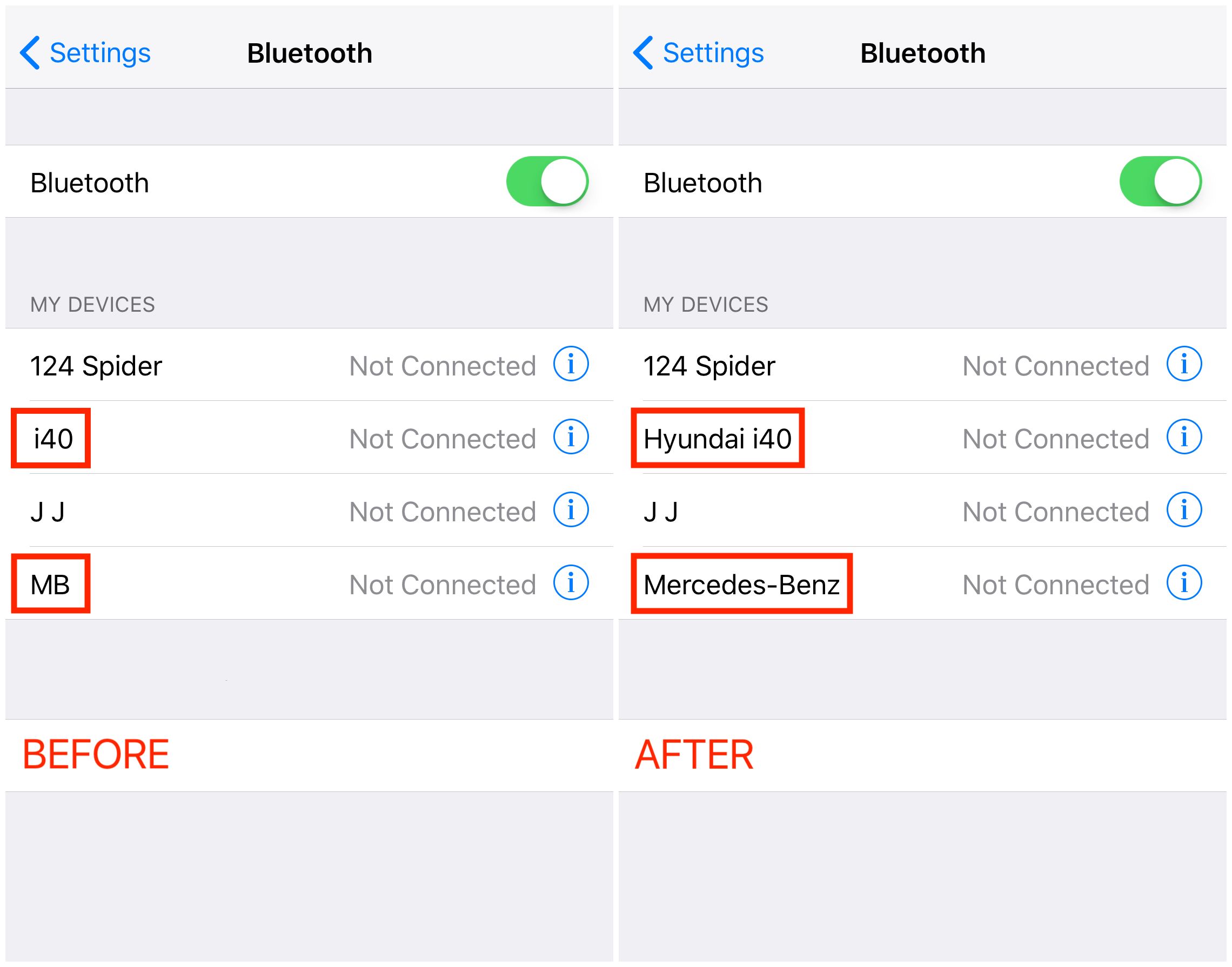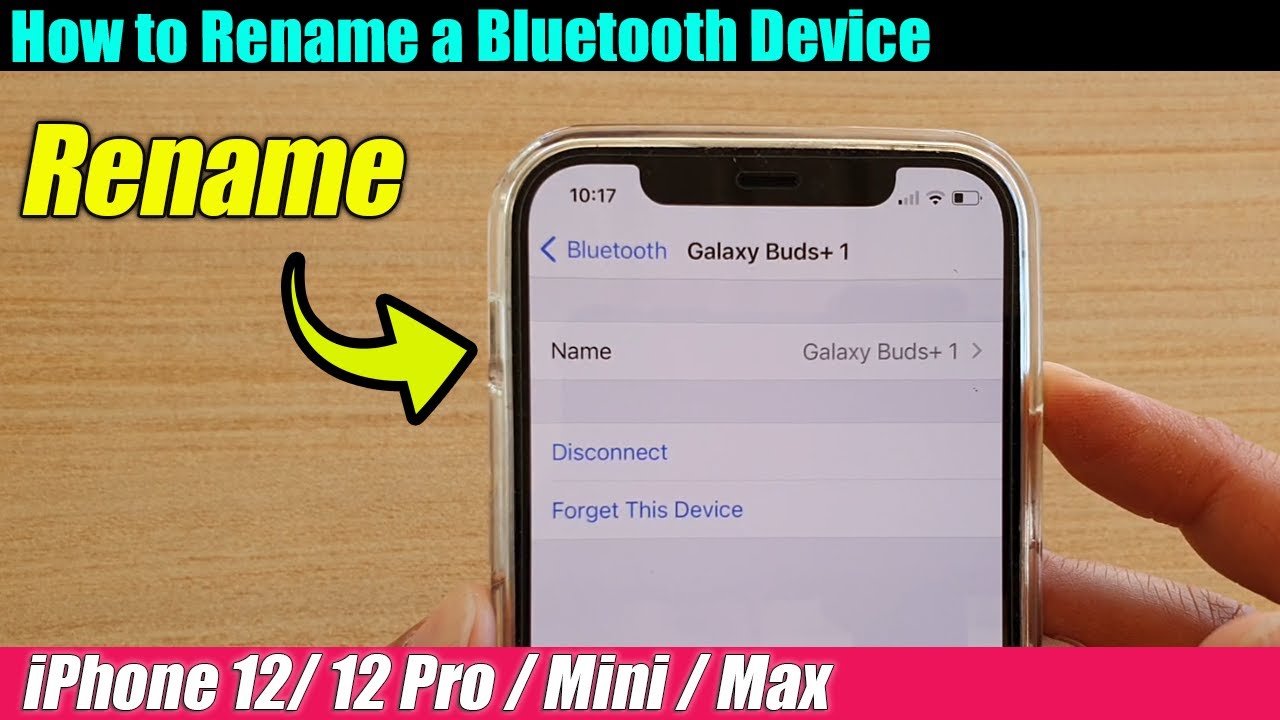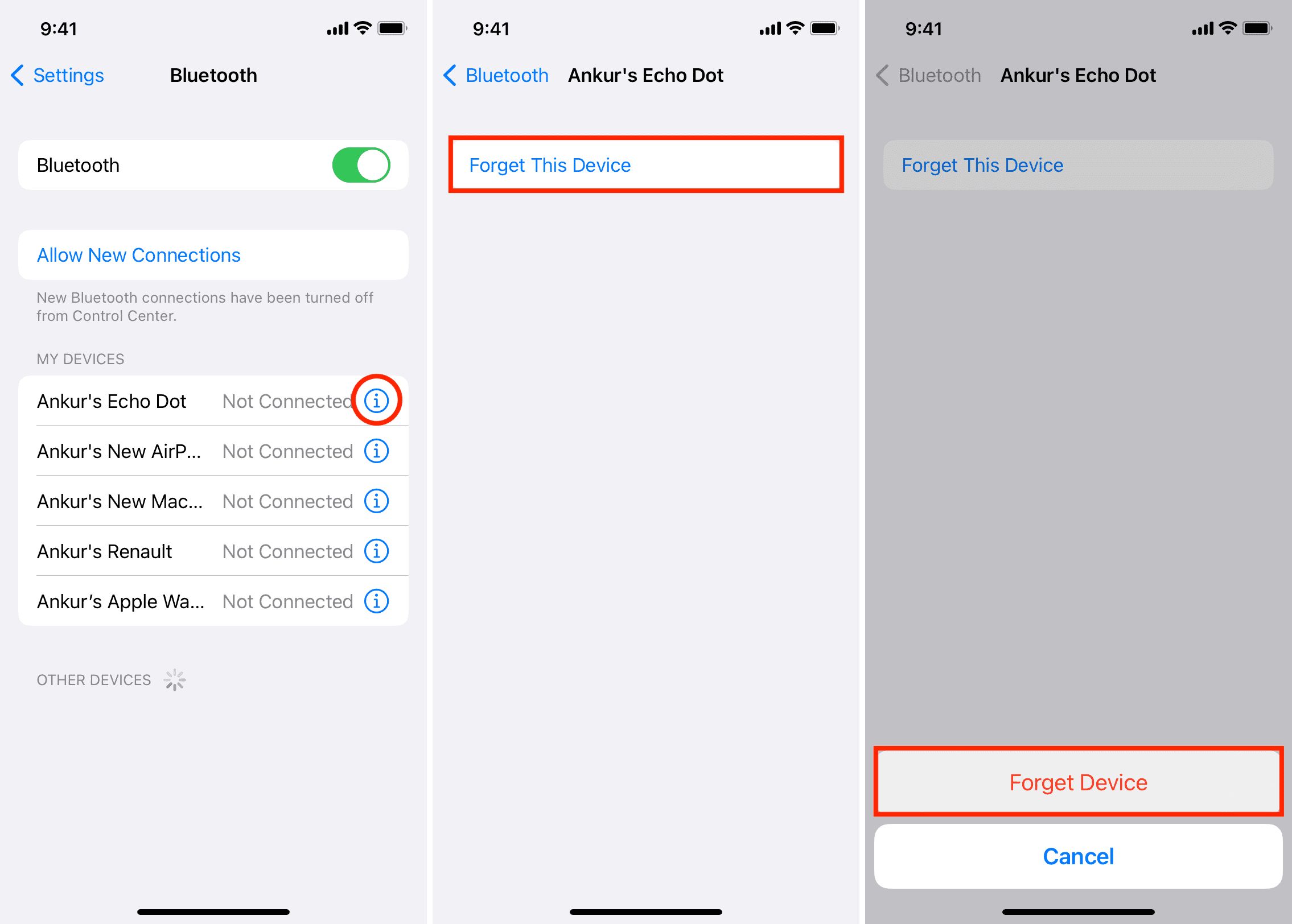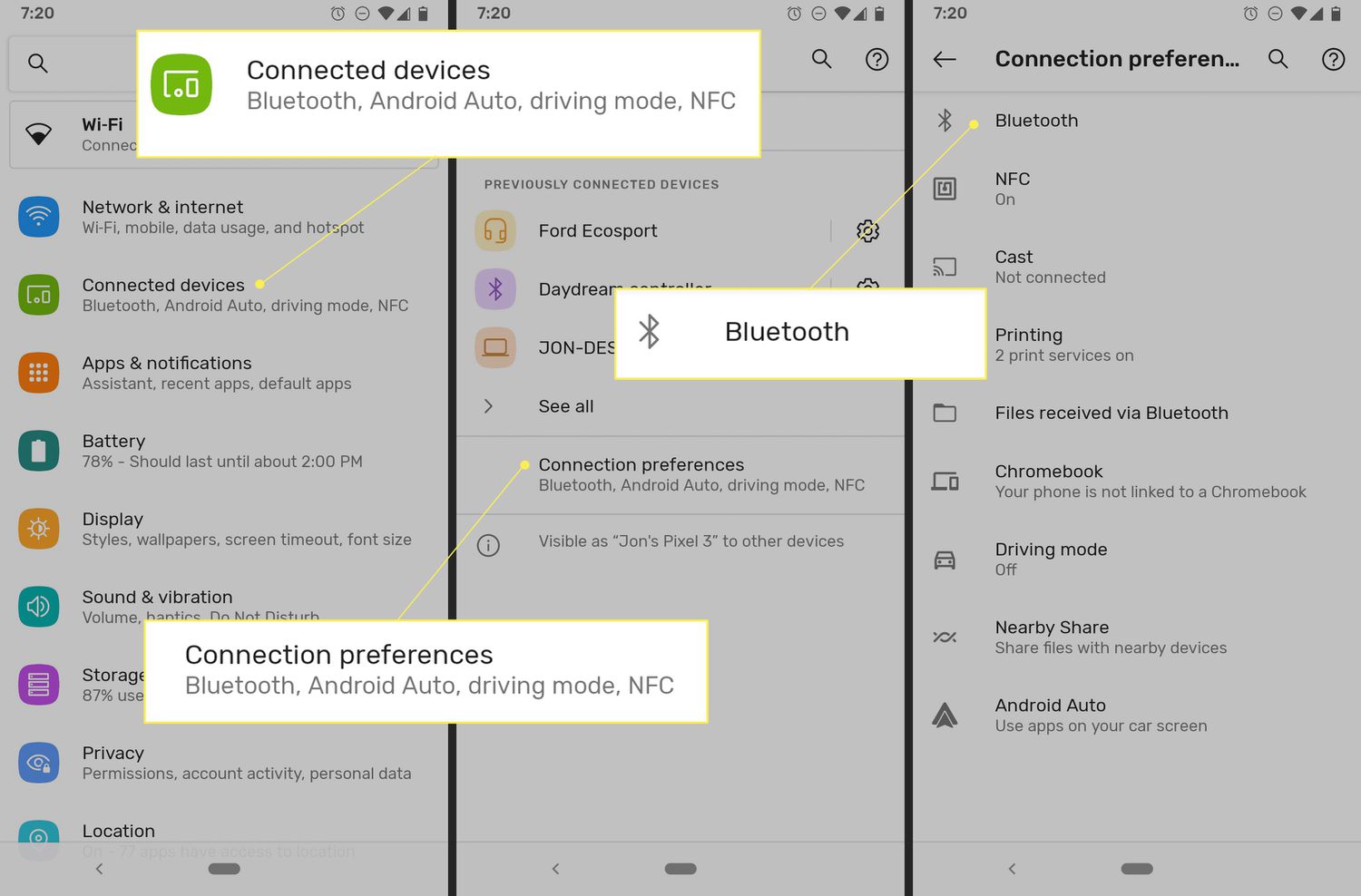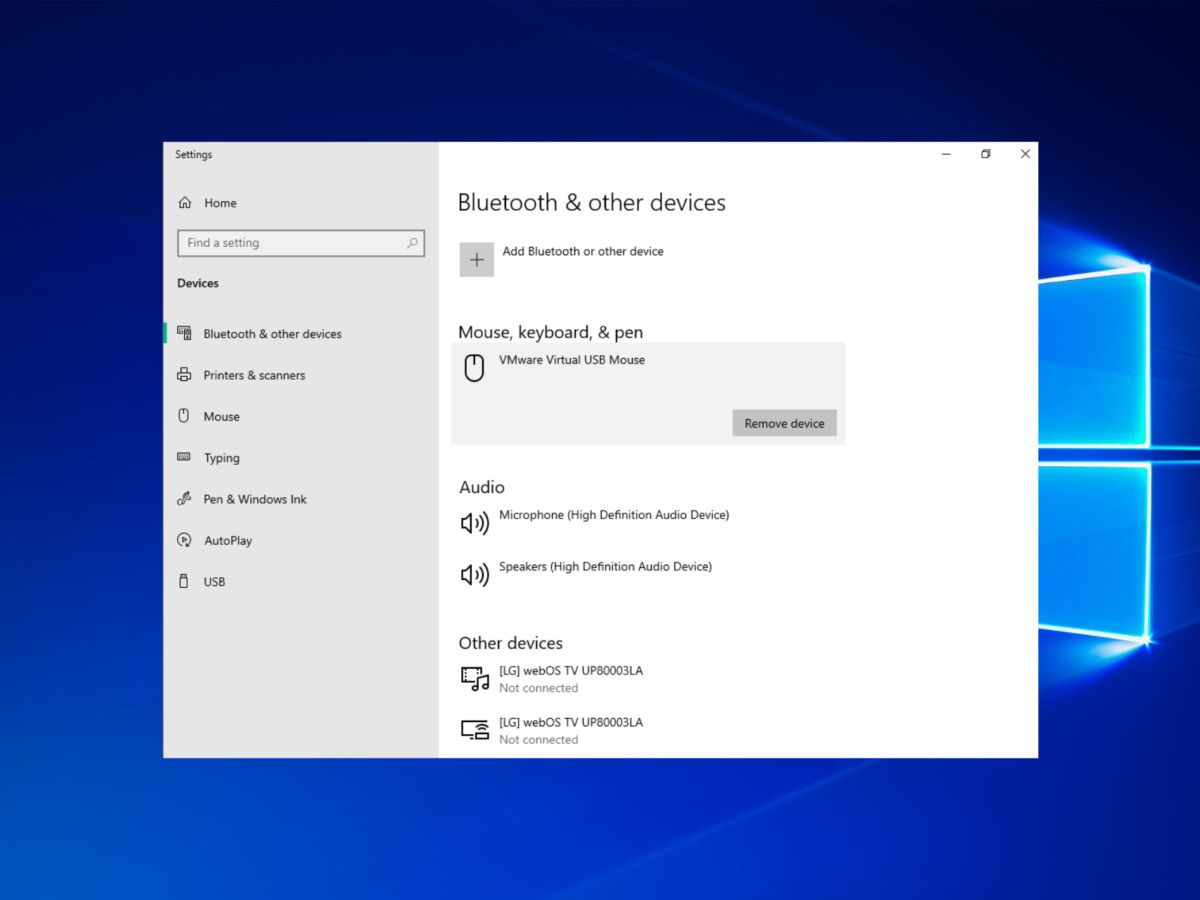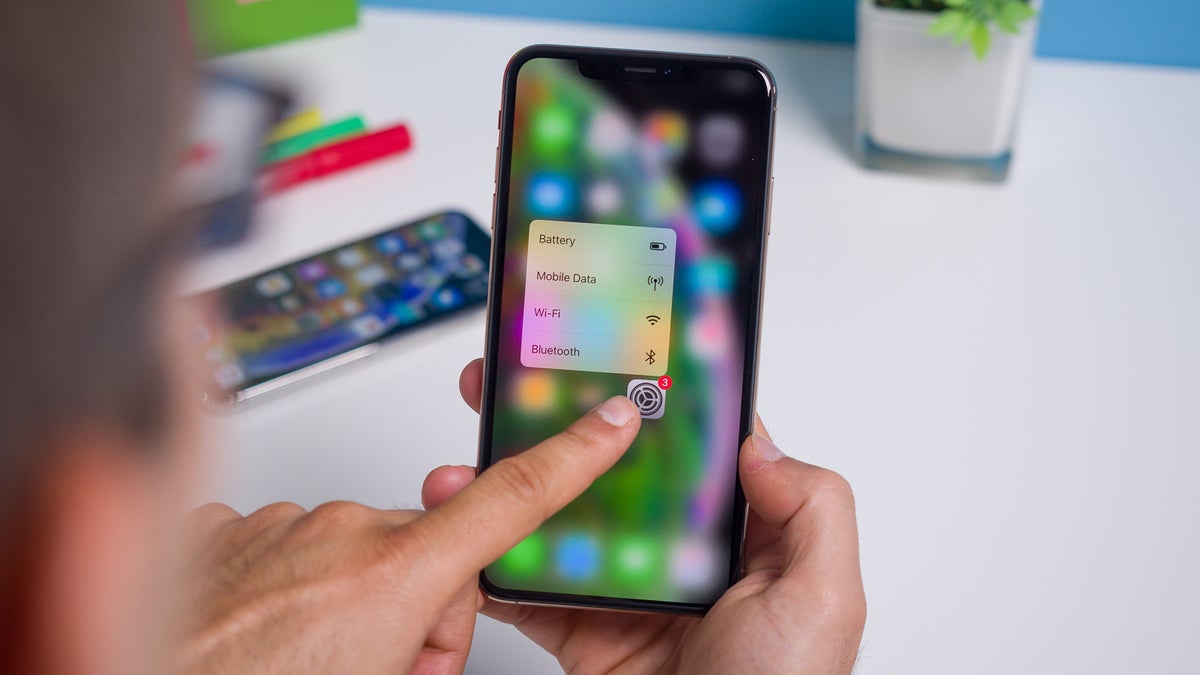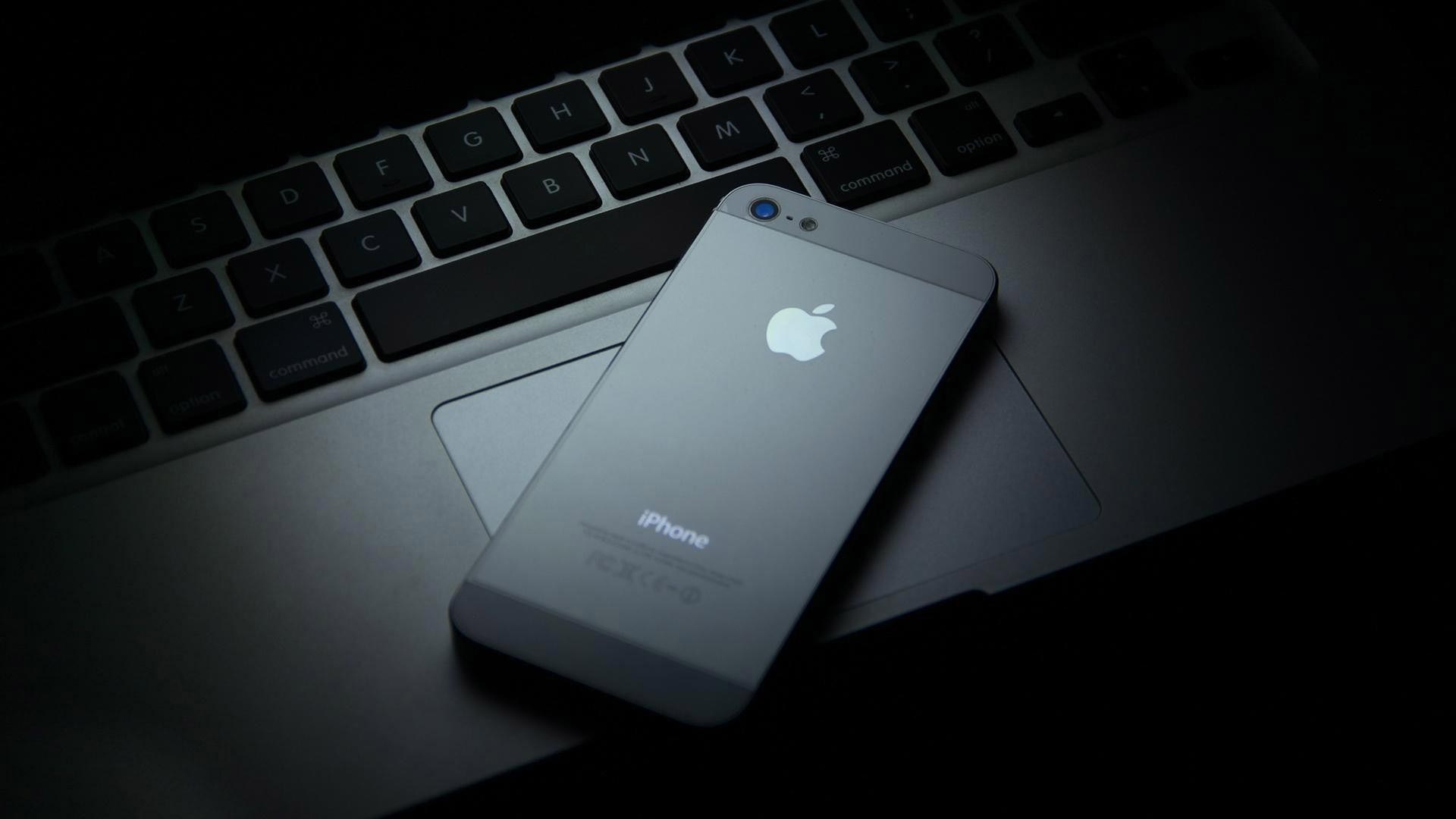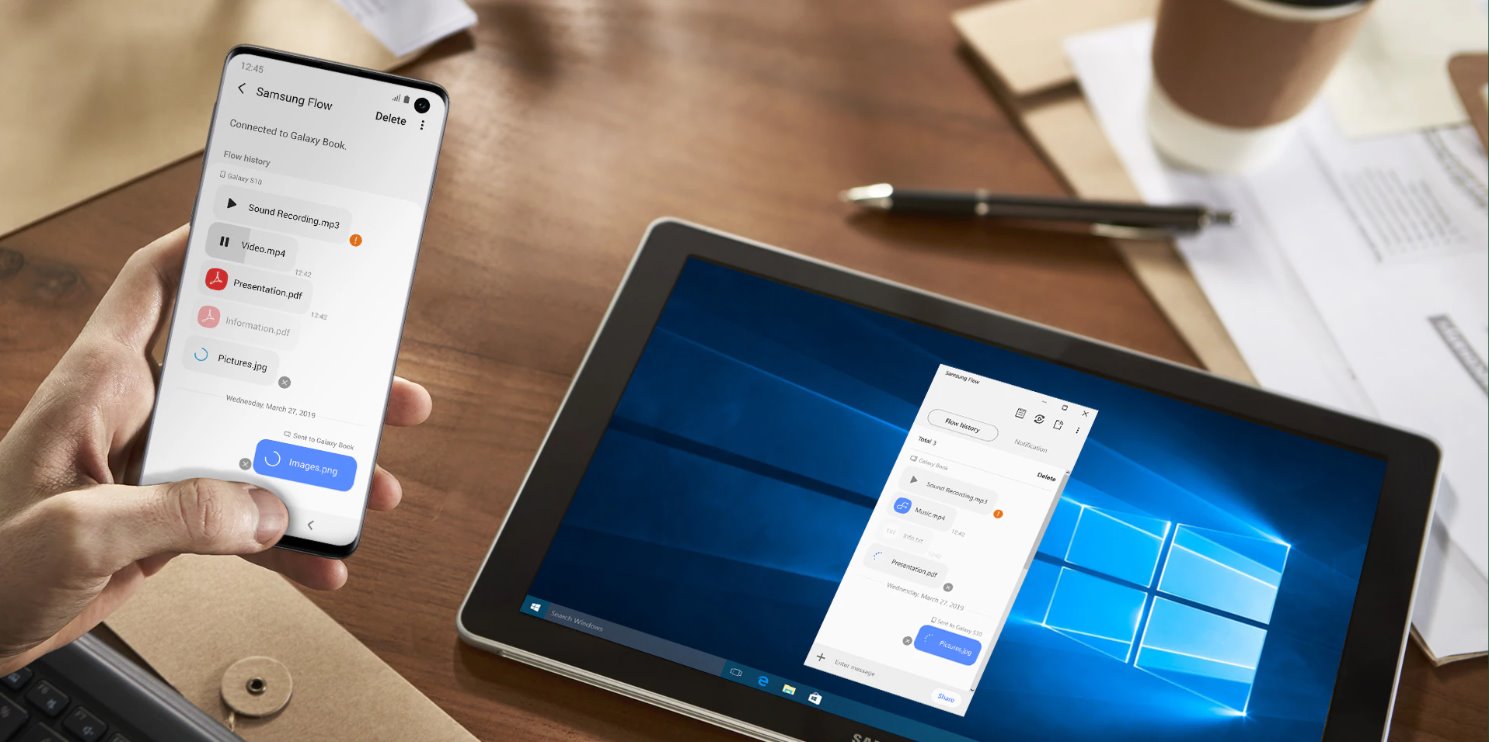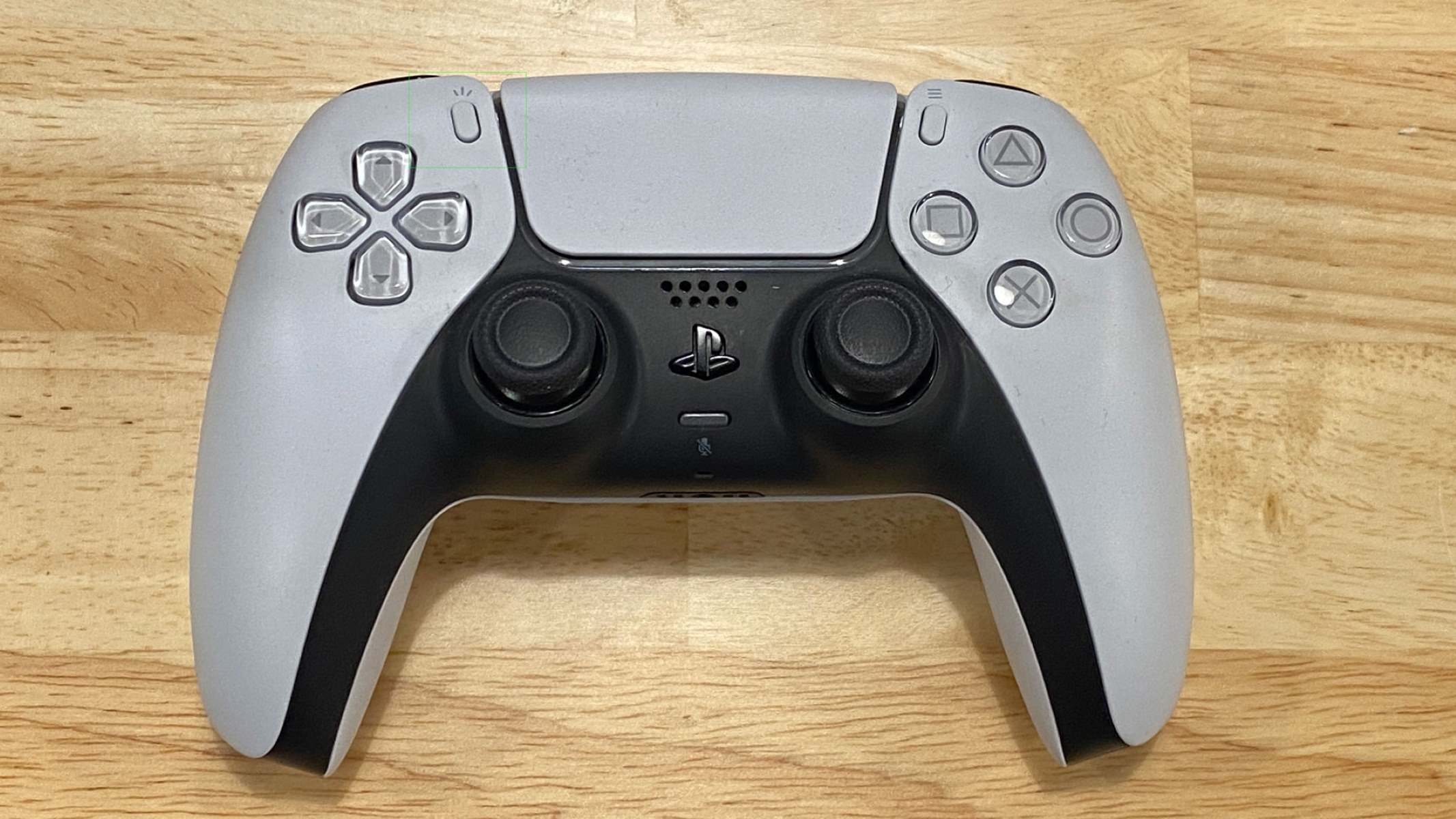Introduction
Bluetooth devices have become an integral part of our everyday lives. From smartphones and laptops to wireless headphones and smart devices, Bluetooth technology allows us to connect and interact with a wide range of devices seamlessly. However, in a world full of interconnected devices, it is crucial to have a well-thought-out naming convention for your Bluetooth devices.
The name you choose for your Bluetooth devices not only helps you easily identify and connect to the right device but also adds a personal touch to your technology. Whether you’re naming your smartphone, wireless earbuds, or smart home devices, the right name can make all the difference in enhancing your user experience.
Having a memorable and descriptive name for your Bluetooth devices can save you time and frustration when attempting to connect to them. Imagine having multiple Bluetooth headphones named “Bluetooth Headphones” or a dozen devices named “Unknown Device” cluttering your device list. By taking the time to properly name your Bluetooth devices, you can improve efficiency, organization, and simplify your overall user experience.
In this article, we will explore the importance of naming Bluetooth devices and provide you with practical tips on how to choose the best names for your devices. Whether you are a tech enthusiast or just someone who wants to optimize their Bluetooth device management, these tips will help you establish a naming convention that works best for you.
Why is naming Bluetooth devices important?
Choosing the right name for your Bluetooth devices might seem like a trivial task, but it serves a significant purpose in enhancing your overall user experience. Here are a few reasons why naming Bluetooth devices is important:
1. Easy identification: When you have multiple Bluetooth devices, such as headphones, speakers, or smart home devices, it can be confusing to remember which device is which. By giving each device a unique and identifiable name, you can quickly recognize and connect to the specific device you want.
2. Enhanced organization: A well-organized list of Bluetooth devices makes it easier to access and manage your connected devices. By having clear and distinctive names, you can quickly locate and connect to the desired device without sifting through a long list of generic or unknown device names.
3. Simplified pairing: When connecting Bluetooth devices, they often appear on a list of available devices, prompting you to select the correct one. By providing descriptive names for your devices, you can eliminate the guesswork and streamline the pairing process. This saves you time and frustration, especially when connecting to frequently used devices.
4. Personalization: Naming your Bluetooth devices allows you to add a personal touch to your technology. You can choose names that reflect your personality, interests, or even create fun and memorable names for your devices. This personalization can make interacting with your devices more enjoyable and give them a unique identity.
5. Improved user experience: By taking the time to name your Bluetooth devices, you are actively investing in improving your user experience. A well-named device list not only helps you stay organized but also enhances your overall satisfaction with the devices you use regularly.
6. Enhanced security: When connecting Bluetooth devices, it is important to ensure the connection is secure. By avoiding default or generic names, you can prevent potential unauthorized access to your devices. Unique and customized device names make it harder for unauthorized users to identify and connect to your devices without your permission.
Overall, naming Bluetooth devices is essential for easy identification, organization, simplified pairing, personalization, improved user experience, and enhanced security. By following the tips and guidelines for naming your Bluetooth devices, you can optimize your device management and fully enjoy the benefits of your connected technology.
Tips for naming your Bluetooth devices
When it comes to naming your Bluetooth devices, there are several tips and considerations that can help you create effective and memorable names. Here are some guidelines to keep in mind:
- Keep it simple and identifiable: Choose names that are short, concise, and easy to remember. Avoid using complex or obscure names that may be difficult to recognize or recall.
- Avoid using default names: Many devices come with generic names like “Headphones” or “Speaker.” Personalize the names of your devices to make them easily distinguishable in a crowded Bluetooth device list.
- Include relevant information: Consider adding information that helps you identify the device’s location or purpose. For example, if you have multiple Bluetooth speakers, you can name them based on the room they are placed in.
- Consider device pairing order: If you frequently connect to specific devices in a particular order, you can name them accordingly. This helps streamline the pairing process, as the devices will appear in the desired order.
- Use consistent naming conventions: Establish a naming convention and stick to it. This can include using specific keywords, abbreviations, or numbering systems to create consistency and make managing your Bluetooth devices easier.
- Be mindful of confidentiality: Avoid using personal information, such as your name or address, in your device names. This helps maintain privacy and security, preventing any potential risks associated with unauthorized access to your devices.
- Avoid offensive or insensitive names: While it can be tempting to use humorous or provocative names, it’s important to be considerate and respectful. Avoid names that may offend or be inappropriate in certain situations.
By following these tips, you can create a well-organized, personalized, and secure Bluetooth device list. Experiment with different naming conventions and find a system that works best for you. Remember, the goal is to make it easier to identify, connect to, and manage your Bluetooth devices, while also adding a touch of personalization to your technology experience.
Keep it simple and identifiable
One of the most important tips for naming your Bluetooth devices is to keep the names simple and easily identifiable. Here’s why:
Firstly, simple names are easier to remember. When you have multiple Bluetooth devices, it’s crucial to have names that are concise and memorable. Avoid using long and complex names that can be confusing or hard to recall. Opt for short and straightforward names that you can easily recognize.
In addition, identifiable names help you quickly identify and connect to the right device. When you’re browsing through a list of available Bluetooth devices, having names that clearly represent each device makes it convenient to select the one you want to connect with. Whether it’s your headphones, speakers, or smart home devices, a recognizable name saves you time and hassle.
When naming your Bluetooth devices, consider using names that describe the device or its purpose. For example, if you have multiple headphones, you can name them based on their brand or distinguishing features. If you have multiple smart home devices, you can include the room they are located in the name. This additional information helps in identifying devices, especially if you have a large collection.
Avoid using generic or default names that many devices come with. For instance, if you have a wireless earbud, instead of leaving it as “Earbud,” give it a unique name like “MusicMasters” or “SyncSounds.” Customizing the names not only adds a personal touch to your devices but also makes them stand out from others in the list.
Remember, the goal is to make it easy for you to recognize and connect to your Bluetooth devices. By keeping the names simple, concise, and identifiable, you can enhance your user experience, save time, and avoid confusion when managing your devices.
Avoid using default names
When it comes to naming your Bluetooth devices, it’s important to avoid using default names that come with the devices. Here’s why:
Default names like “Headphones,” “Speaker,” or “Keyboard” are not only unoriginal but also make it difficult to distinguish between devices when you have multiple of the same type. Imagine trying to connect to your headphones and finding multiple devices named “Headphones” in the Bluetooth device list. This can cause confusion and make it challenging to pair with the correct device.
By customizing the names of your Bluetooth devices, you can make them unique and easily identifiable in the list. Personalized names can reflect the brand, model, or any distinctive features of the device. For example, instead of leaving your wireless earbuds as “Earbuds,” you can name them “SyncBeats” or “AudioPro.” Not only does this make it easier to remember which device is which, but it also adds a touch of personalization to your technology.
Moreover, using default names can pose a security risk. Hackers or unauthorized individuals who come across your Bluetooth devices might attempt to gain access by targeting generic names commonly associated with specific device types. By giving your devices unique names, you mitigate this risk and make it harder for unauthorized access.
When you receive a new Bluetooth device, take a moment to rename it before connecting it to your other devices. This ensures that you have full control over the names and can easily identify each device in your Bluetooth device list.
Remember, the goal is to have distinct and personalized names for your Bluetooth devices that reflect their unique characteristics. By avoiding default names and giving your devices custom names, you’ll enhance your ability to identify and connect to the right device while maintaining a higher level of security.
Include relevant information
When naming your Bluetooth devices, consider including relevant information that can help you identify the device’s location or purpose. Here’s why it’s important:
Adding descriptive details to your Bluetooth device names can make it easier to distinguish between devices, especially if you have multiple devices of the same type. For example, if you have multiple Bluetooth speakers, you can include the room or area where each speaker is located in the name. This way, you can quickly identify and connect to the specific speaker you want to use.
By including relevant information, you can also streamline your device management. For instance, if you have a set of wireless earbuds specifically for workouts, you can include “Workout” in the device name. This ensures that you can easily identify and connect to the right earbuds without going through a trial-and-error process.
Another consideration is to include the brand or model name of the device in the Bluetooth device name. This can be useful if you are managing multiple devices from the same brand or if you want to keep track of the specific models you own. For example, if you have a collection of Bluetooth headphones from a particular brand, incorporating the brand name in the device name allows for quick and easy identification.
It’s important to strike a balance between including relevant information and keeping the names concise. Although adding descriptive details can be helpful, overly long names can become cumbersome and challenging to manage. Remember to prioritize the most important information that will assist you in quickly identifying and connecting to your Bluetooth devices.
By including relevant information in your Bluetooth device names, you can improve device management, quickly locate the device you want to use, and customize your experience based on specific devices and their purposes.
Consider device pairing order
When naming your Bluetooth devices, it’s worth considering the device pairing order. This can be particularly helpful if you frequently connect to specific devices in a particular order. Here’s why it’s important:
By naming your Bluetooth devices in a way that reflects the pairing order, you can streamline the connection process. When multiple devices are available for pairing, they are usually listed in the order they were discovered or last connected. However, this default order might not align with your preferred pairing sequence.
For example, let’s say you have multiple Bluetooth speakers located throughout your home, and you always want to connect to the speaker in the living room first. By incorporating a number or an ordered prefix in the device name, such as “1-Living Room Speaker” or “Living Room Speaker (1),” you can ensure that the living room speaker appears as the first option in the pairing list, simplifying the connection process.
Similarly, if you frequently connect to specific headphones before other devices, you can include a prefix like “1-” or “A-” to prioritize their appearance in the list. This way, you won’t have to search for them every time you want to connect.
Consider your usual device pairing sequence and order the names accordingly. By doing so, you can save time and frustration by quickly locating and connecting to your preferred devices without having to scroll through a long list of available devices.
Keep in mind that while naming devices based on pairing order can be useful, it may require periodic updates as you acquire new devices or change your preferences. Nonetheless, by following this approach, you can simplify the pairing process and optimize your Bluetooth device management.
Use consistent naming conventions
Using consistent naming conventions for your Bluetooth devices can greatly simplify device management and enhance your overall user experience. Here’s why it’s important:
When you have a collection of Bluetooth devices, maintaining a consistent and standardized naming convention makes it easier to identify and locate specific devices in your Bluetooth device list. Consistent names allow you to quickly recognize devices, even if you haven’t connected to them in a while, and ensures continuity across your device ecosystem.
To establish a naming convention, you can determine specific keywords, abbreviations, or numbering systems to use in the device names. For example, you could include the device type followed by a distinguishing feature or the brand name. This way, if you have multiple speakers, you can include “Speaker” in each device’s name to easily identify them.
Consider using consistent abbreviations for brand names or model numbers to maintain clarity across all devices. This can be especially useful when you have multiple devices from the same brand, allowing you to differentiate them at a glance.
In addition to consistent naming, it’s also helpful to maintain a consistent format for device names. For example, you could use title case for device names, capitalize certain words, or separate words with underscores or dashes for readability. By standardizing the format, you can ensure that your device names are visually appealing and easy to read.
Consistency is key when it comes to maintaining an organized device list. It allows for efficient device management, reduces confusion, and provides a seamless user experience. When you add a new device to your collection, remember to apply the established naming convention to maintain consistency.
By using consistent naming conventions, you can save time and minimize frustration when trying to locate and manage your Bluetooth devices. It also ensures that your device list remains organized and easy to navigate, no matter how many devices you have connected.
Be mindful of confidentiality
When naming your Bluetooth devices, it’s crucial to be mindful of confidentiality and avoid including personal or sensitive information in the names. Here’s why it’s important:
Bluetooth device names are often visible to others when your device is in discoverable mode. Including personal information such as your name, address, or any other identifiable information in the device names can expose you to potential privacy risks. Unauthorized individuals who come across your device names may be able to gather personal details about you, which could lead to identity theft or other forms of privacy breaches.
To protect your confidentiality, avoid using names that directly reveal personal information. Instead, opt for names that are more generic or unrelated to your personal identity. For example, use terms like “Home Speaker” or “Work Headphones” rather than including your specific address or name in the device names.
In some cases, you might have sensitive devices or specific purposes for your Bluetooth devices that you’d like to keep private. For instance, if you have a medical device or a device tied to a confidential project, be cautious about revealing such information in the device names. Consider using more generic or nondescript names to avoid drawing attention to these devices.
By being mindful of confidentiality, you can protect your personal information and maintain control over who has access to it. Remember that Bluetooth device names are a potential gateway to your privacy, so it’s important to exercise caution when naming your devices.
Always prioritize your privacy and security when naming Bluetooth devices, and choose names that do not reveal personal or sensitive information. Taking this precautionary step ensures that you can enjoy the convenience of Bluetooth connectivity without compromising your confidentiality.
Avoid offensive or insensitive names
When naming your Bluetooth devices, it’s essential to exercise thoughtfulness and respect by avoiding offensive or insensitive names. Here’s why it’s important:
The Bluetooth device names can be visible to others in your vicinity, whether it’s in a public space or within range of your Bluetooth signal. Using offensive or inappropriate names can not only offend or upset those who come across them but also reflect poorly on your own character.
It’s important to consider the diverse backgrounds and sensibilities of the people around you. Names that contain profanity, hate speech, derogatory terms, or any other offensive language can create discomfort, hurt feelings, or even lead to conflicts. Respectful and inclusive naming ensures a harmonious and inclusive environment for everyone.
Furthermore, using offensive or insensitive names can have severe consequences in professional settings. It could damage your professional reputation or result in disciplinary action. Companies and organizations often have policies in place that prohibit the use of offensive language or inappropriate behavior, including the naming of Bluetooth devices.
Keep in mind that what might seem funny or harmless to you could be offensive to others. It’s crucial to be considerate and avoid any names that may be disrespectful, discriminatory, or promote stereotypes, even unintentionally.
By choosing names that are inclusive, neutral, and respectful, you contribute to creating a welcoming and inclusive environment for everyone. It’s always better to err on the side of caution and choose names that are universally acceptable and do not offend or marginalize any individuals or groups.
Remember, the objective is to create a positive and respectful experience for both yourself and those who may come into contact with your Bluetooth device names. By avoiding offensive or insensitive names, you demonstrate your commitment to fostering a respectful and inclusive environment.
Conclusion
Naming your Bluetooth devices is a small but important aspect of optimizing your user experience and device management. By following the tips outlined in this article, you can create effective and memorable names for your Bluetooth devices.
Keeping your Bluetooth device names simple and identifiable enables easy recognition and connection to the correct device. Avoiding default names and personalizing your device names adds a personal touch and facilitates efficient organization. Including relevant information in your device names helps further identify devices based on their location or purpose.
Considering the device pairing order allows for seamless pairing, while using consistent naming conventions promotes organization and simplifies device management. Being mindful of confidentiality ensures the protection of your personal information, and avoiding offensive or insensitive names promotes respect and inclusivity.
By implementing these naming conventions, you can enhance your overall Bluetooth device management experience. Remember to strike a balance between unique and descriptive names while prioritizing a respectful and inclusive environment.
So, take a moment to review your Bluetooth device names and make any necessary changes. With well-chosen names, you’ll enjoy a streamlined user experience, quick device identification, and a sense of personalization that reflects your technology preferences and style.
Don’t underestimate the power of a well-named Bluetooth device – it can truly make a difference in simplifying your technology interactions and improving your overall user satisfaction.







